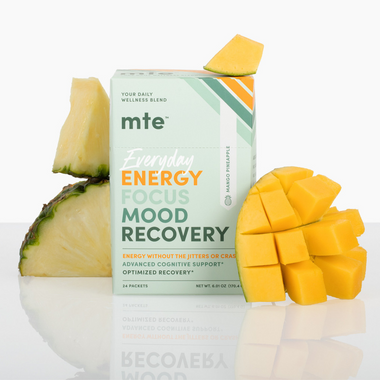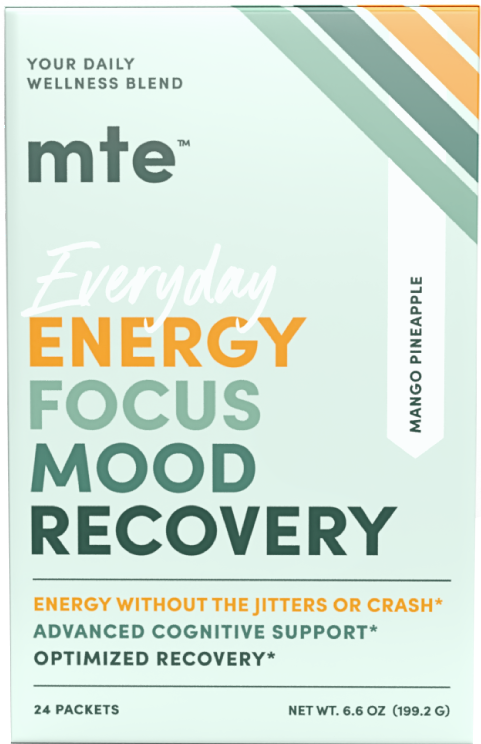
Why TikTok’s Vagus Nerve Obsession Needs Fact-Checked
If you’ve been on TikTok lately, you’ve probably seen at least a few reels about vagus nerve stimulation and vagus nerve “icing”. For the most part, vagus nerve exercises are touted as a way to self-soothe, claiming to relieve anxiety by stimulating the parasympathetic nervous system, which is an autonomic nervous system that calms the body down on a biological level.
The idea itself makes sense. And unlike many TikTok health fads, there are legitimate medical uses for stimulating the vagus nerve. But just like many TikTok health fads, #vagusnerve assumes a lot and gets several things wrong. So before you take a random influencer’s advice about manipulating one of the most critical bodily systems that allow you to function correctly as a human, let’s take a look at what’s fact and what’s fiction.
What is the Vagus Nerve?
The vagus nerve is the longest cranial nerve in the body and the 10th pair of cranial nerves. It’s also referred to as the wandering nerve, because it’s got its little dendritic tendrils in everything. Originating in the lower brain, as it exits the brain it splits into two, travelling symmetrically down through the chest and abdomen on each side of the body, branching off to connect to vital organs and structures along the way.
As part of the autonomic system, the vagus nerve controls involuntary functions like digestion, breathing, heart rate, etc. It’s the longest nerve in the autonomic nervous system, and it not only delivers signals from the brain to the organs, it also receives signals from the organs and delivers them to the brain.
The vagus nerve also releases neuromodulators involved in signaling relaxation, positive mood and cognitive engagement, so its activity plays a role in learning and memory as well. Overall, just a key player in why you don’t have to remember to breathe every 5 seconds to stay alive. Not that important.
What are the Medical Uses of Vagus Nerve Stimulation?
The newer research in neurological disorders and brain degeneration, whether from disease or injury, is focused on utilizing the abilities of the brain to teach it to adapt. This is where the vagus nerve has gone viral in the medical community. Traditional vagus nerve stimulation has been able to target disorders that specifically deal with motor function, cognitive function, mood, and stress/trauma. Some medical conditions where clinical evidence indicated vagus nerve stimulation is useful include:
- Spinal cord injuries: reduces neuroinflammation and improves tissue healing
- Low mood, chronic stress: downregulates hippocampal activity and lowers harmful chemical byproducts of stress response
- Parkinson’s: slows positive cell loss and pro-stress chemicals and improves motor function
- Colitis, IBS: decreases inflammatory markers and reduces symptom severity
- Epilepsy: has been shown to decrease the strength and frequency of seizures
- The FDA currently approves medical vagus nerve stimulation devices for select treatment resistant seizure and mood disorders.
Fun fact: Epilepsy treatment was the impetus for the first vagus nerve stimulation device in the late 19th century. In a time where seizure disorders were thought to be caused by too much blood in the brain, Dr. James Corning thought to press a Y-shaped fork against the neck where the vagus nerve pair is at close access and electrically stimulate both sides of the nerve. He posited it would slow blood flow to the brain as well as heart rate.
Traditional treatment requires a minor surgery where a small electrical stimulator is put in your neck near the vagus nerve and a connected battery somewhere near the armpit. The patient has full control of the device and can change stimulation settings like strength, duration and frequency. It requires another minor procedure about every 5 years when the battery gets low. Newer, less invasive, treatments are also being tested, including needle insertion and transdermal stimulation.
What are Social Media’s Claims About Stimulating the Vagus Nerve?
Almost 200 million views on #vagusnerve will yield a host of wellness influencers touting this ability to “reset” the vagus nerve, fixing your anxiety and gut health. At face value, it sounds right: the vagus nerve is a key actor in parasympathetic nervous system activation, which is the nervous system that tells the brain and body to calm down. With consistent training (exercises), you should be able to teach your brain to be less anxious and in a better mood because you’re hacking your nervous system biologically.
You’ll definitely hear “rest and digest” more times than anyone needs to hear it. And there’s a lot of good vocab to be had, plus all the blue-check keywords like “medical use” “IBS” and “depression”. All the evidence and benefits narrated as the influencer demonstrates the head postures and eye movements said to reset the nerve. Or maybe they’re in an ice bath. Some of us will go farther than others for the potential of a legit wellness hack, especially if it’s anti-stress.
The idea: a simple self-care habit can completely transform your stress, mood, and all the other positive things that happen when you’re relaxed and feeling positive about life. Sound too good to be true? Again, like many TikTok health fads, it is. Everybody saw that coming, right?
What Do the Medical Professionals Have to Say, Though?
Let’s first just devil’s advocate the reasoning behind why people might feel like vagus nerve exercises are helping their stress and mood. Just like breathing exercises and meditating, you’re taking time to focus on yourself in a stressful situation. Simply concentrating on other things like breathing or moving your head a certain way can dampen a stress response and increase feelings of relaxation via the same parasympathetic neural pathways. Correlation is not causation.
That being said – how does the medical community feel about this newest TikTok wellness trend?
“Before accepting free social media advice on this topic, I recommend checking the evidence. Scientists are just starting to map and understand what the 100,000 vagus nerve fibers do. So when you are advised to “stimulate your vagus nerve” by taking a deep breath or ice bath, you should ask: “Which of my vagus nerves?” The answer is that no one knows.”
– Kevin Tracey, Professor of Molecular Medicine and Neurosurgery at the Donald and Barbara Zucker School of Medicine at Hofstra/Northwell, Executive VP of Research at Northwell Health
“Some may be willing to make inferences based on evidence that exercise and deep breathing can have beneficial effects, but I don’t know of any controlled, well-powered studies showing that these effects are mediated by the vagus nerve. I think it would be fair to say we still have a lot to learn.”
– Christa McIntyre, Associate Professor of Psychobiology at The University of Texas at Dallas
“These videos claim that the exercise itself is ‘activating’ the vagus nerve which in turn is causing relaxation. There is no evidence for this. The neuroscience of mental health conditions is very limited and in most cases, we don’t yet fully understand the neurobiological basis… statements such as ‘rewiring the brain through the magic of neuroplasticity’ tend to be used because they sound scientific, but in reality these statements — in the way they are intended — have no scientific basis.”
- Simon Cork, Honorary Lecturer at Imperial College London, Senior Lecturer in Physiology at Anglia Ruskin University Medical School
While our research gave us the idea there’s a big disagreement on whether exercise, massage or cold-induced vagus nerve stimulation is a holistic tool or simply pseudoscience. There are researchers and medical professionals excited about the potential of the vagus nerve in treatment for many chronic conditions, especially mental health.
It seems the real issue at hand is that TikTok’s vagus nerve advice is based on a series of inferences based on a pile of assumptions. Might there be something to it? Yes. Do we have any functional knowledge on if, how, what, why, or safety? No.
TikTok Health Trends: A Primer on Separating Fact from Fiction
TikTok has no shortage of misinformation about health and lifestyle choices. Wellness influencers mean well, we’re sure, but unresearched and/or inaccurate content can be damaging, whether promoting problematic eating, dangerous habits, or touting products and practices that do more harm than good. And it’s getting harder and harder to suss out what’s real from what’s not.
So here are our 3 best tips for deciding to scroll right past that very excited, very cute girl in her matching workout set, talking at her kitchen counter while making her morning smoothie, as if she just couldn’t wait to tell you how you can fix your life with this super-easy industry secret:
1. Credentials matter. You don’t have to gain any formal training to call yourself a health coach or nutrition counselor, but you do need formal training to put DO, PT, RDN, PhD, etc in your bio. Trust the professionals over an influencer with a big following.
2. Check receipts. Do they mention a study? Look that up real quick and read it for yourself. It’s so easy to misunderstand or misrepresent the size, methods, veracity, and accuracy of a study’s results if it fits nicely into your pitch.
3. Know red flag words. Chances are a wellness influencer using terms like “hack”, “reset”, “detox/toxins/toxicity”, “always/never”, “cleanse”, etc is not doling out factual information.
4. It’s the common sense for us. Does it seem weird that putting tape on your face makes 20 years of wrinkles disappear in 3 weeks? Probably because it can’t actually do that. Or that there is one complex plyo move that will completely reshape your body in 8 weeks? Probably because it won’t. But if you’re interested in a not-yet-trending wellness product (#wedonthaveatiktok) that actually has scientifically-backed ingredients as its foundation, MTE’s adaptogens support against stress and low mood while promoting sustained energy. Check it out.






